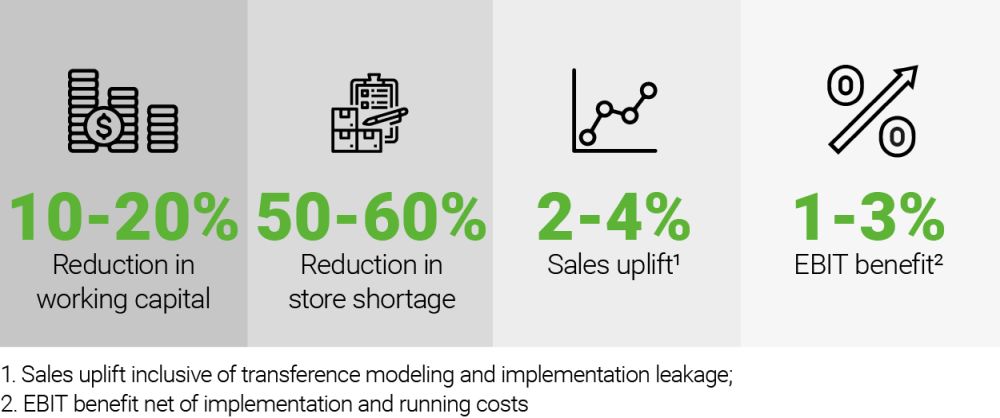A brutal mix of factors over the last few years led to retailers absorbing excess inventory shocks. But with the cost of capital increasing, it's more important than ever to ensure inventory levels do not rise to unsustainable levels while also avoiding out-of-stocks.
Typically, retailers have prioritized sales and cost of goods sold as the main levers to manage return on invested capital (ROIC), placing much less focus on inventory management. However, this can be an equally powerful lever when utilized correctly. Fortunately, advancements in artificial intelligence (AI) and machine learning (ML) are revolutionizing how retailers approach inventory management. By leveraging these technologies, retailers can optimize their supply chains, reduce markdowns, increase margins, avoid stock outs, and enhance customer satisfaction.
Computational and planning complexity have long been bottlenecks in the planning and allocation process. Leveraging AI/ML technology allows retailers to move away from the traditional sales volume-clustering or banding process to one that takes several factors into account and groups stores more accurately based on multiple characteristics, not just sales.
By improving inventory allocation, retailers can also enhance the customer experience by ensuring products are available when and where customers want them and reduce the likelihood of stock outs, backorders, and long wait times. Moreover, ensuring products are available when and where customers want them will also materially improve markdown risk, allowing retailers to sell more product at closer-to-full retail price and avoiding the margin degradation that occurs when significantly marking down product that was not accurately allocated in the first place.
In our experience, a properly built AI/ML-based inventory tool can result in: 10-20% reduction in working capital, a 50-60% reduction in stock shortage in stores, a 2-4% uplift in sales, and a 1-3% margin benefit.
FIGURE 1: Typical benefits of using AI/ML-enabled inventory management

Inventory deployment is done in three phases:
- Simulate performance using historic data: The process starts by collecting relevant data and conducting management interviews. Once background research is complete, the next step is to run simulations of what the AI tool would have done against historical data to build the business case. The final step in preparation involves conducting sales transference and other transaction modeling to appropriately size the potential benefit.
- Pilot to validate the business case: Once a business case has been made, it can be tested and verified with a digital twin. This step involves working with the information technology team to determine integration options and conducting a digital twin test to prove the business case against live data using two different store groupings. This digital twin test compares the delta between the current allocation software and AI recommendations with and without interference.
- Roll out across multiple categories: At this point, a detailed rollout plan is created–which can be a phased approach or all at once across all categories–including deciding which key areas to pilot first, training the allocation or other teams as needed, and creating a dashboard to monitor and track performance.
FIGURE 2: Significant differences between traditional inventory planning tools and AI/ML tool

In the rapidly evolving retail landscape, staying competitive means more than just offering a diverse range of products. Using AI tools in inventory management allows retailers to work at the fringes of their assortment and unlock "nuggets of value" that were previously unknown or untouchable. Within the core assortment, it's important to note that nothing changes radically from the current planning and allocating process in place today. Deploying available inventory more effectively is an unlock that can improve performance overall and give retailers the leverage to grow their business despite market trends.
The content of this article is intended to provide a general guide to the subject matter. Specialist advice should be sought about your specific circumstances.



